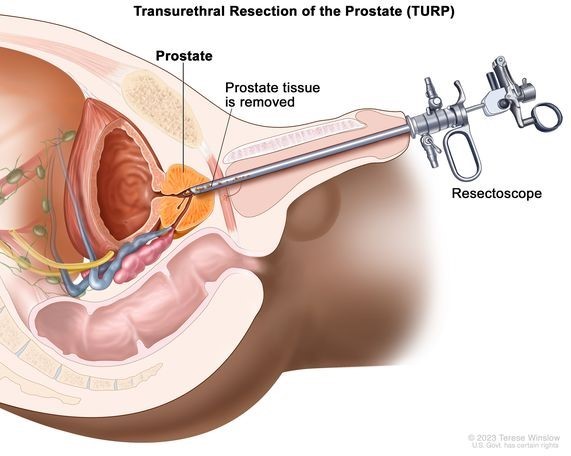A nurse is caring for a preschooler who recently experienced the death of a parent. Which of the following findings should the nurse identify as consistent with this age group?
Believes the death is punishment for bad behavior
Recognizes the parent will never wake up
Expresses curiosity about the funeral service
Understands that everyone dies eventually
The Correct Answer is A
Correct answer: A
Preschool-aged children (around 3 to 5 years old) have a limited understanding of death compared to older children or adults. They may not fully grasp the finality and permanence of death. They often have a more concrete and literal understanding of death.
A. Believing the death is punishment for bad behavior: Preschool-aged children (typically 3 to 5 years old) often have magical thinking and may believe that their thoughts or actions can cause events to happen. They may think that the death of a parent is a punishment for something they did or thought, reflecting their egocentric view of the world.
B. Recognizing the parent will never wake up: This understanding is more commonly seen in older children who have a more mature grasp of death. Preschool-aged children may not fully comprehend that death is irreversible and permanent.
C. While preschoolers might ask questions about the funeral out of curiosity, this is not the primary way they process or react to the death of a loved one. Their questions are often more about trying to understand what is happening rather than a genuine curiosity about the specifics of the service.
D. Understanding that everyone dies eventually: While preschool-aged children may have some understanding that death is a natural part of life, their comprehension of its full implications is limited. They may not fully grasp the universality of death and its inevitability for all living beings.
Nursing Test Bank
Naxlex Comprehensive Predictor Exams
Related Questions
Correct Answer is B
Explanation
Prednisone can cause blood glucose levels to increase.
The nurse should explain to the client that the reason for checking his blood glucose level is because prednisone, a medication he is receiving, can cause an increase in blood glucose levels. Prednisone is a corticosteroid medication that is commonly used in the treatment of various conditions, including COPD. It has the potential to raise blood glucose levels by promoting gluconeogenesis (the production of glucose from non-carbohydrate sources) and decreasing insulin sensitivity. Monitoring blood glucose levels is important to assess and manage any potential hyperglycaemia or changes in the client's blood sugar levels while on prednisone.
Older adults are not at increased risk for developing type 1 diabetes mellitus in (option A) is incorrect. Type 1 diabetes is an autoimmune condition that typically occurs in childhood or adolescence, and it is characterized by the destruction of insulin-producing cells in the pancreas.
Albuterol treatments, which are used to relieve bronchospasms in clients with COPD, are not known to cause blood glucose levels to decrease in (option C) is incorrect. Albuterol is a beta-2 adrenergic agonist that primarily acts on the respiratory system and does not have a direct effect on blood glucose levels.
Having COPD does not directly cause blood glucose levels to fluctuate in (option D) is incorrect. While there can be various factors that may indirectly affect blood glucose levels in individuals with COPD (e.g., medications, stress, comorbidities), the primary reason for monitoring blood glucose in this case is the use of prednisone.
In summary, the nurse should explain to the client that the blood glucose levels are being checked because prednisone, a medication he is taking for his COPD, can cause an increase in blood glucose levels. This allows for appropriate monitoring and management of any potential hyperglycemia associated with the use of prednisone.
Correct Answer is A
Explanation
Dark red urine following a transurethral resection of the prostate (TURP) can indicate active bleeding or hematoma formation. It is important to notify the provider because further assessment and intervention may be necessary to address the source of the bleeding and prevent complications.
Frequent urge to urinate is expected after a TURP procedure as the bladder recovers and adapts to the changes. This is not a concerning finding and does not require immediate reporting to the provider.
Urine output of 300 mL over 8 hours can be considered adequate, especially in the early postoperative period. The nurse should continue to monitor the client's urinary output, but this finding does not require immediate reporting.
Occasional small clots in the urine can be expected after a TURP procedure due to the healing process and sloughing of tissue. However, if the clots become large or obstructive, or if there is a sudden increase in the frequency of clots, it should be reported to the provider.

Whether you are a student looking to ace your exams or a practicing nurse seeking to enhance your expertise , our nursing education contents will empower you with the confidence and competence to make a difference in the lives of patients and become a respected leader in the healthcare field.
Visit Naxlex, invest in your future and unlock endless possibilities with our unparalleled nursing education contents today
Report Wrong Answer on the Current Question
Do you disagree with the answer? If yes, what is your expected answer? Explain.
Kindly be descriptive with the issue you are facing.
